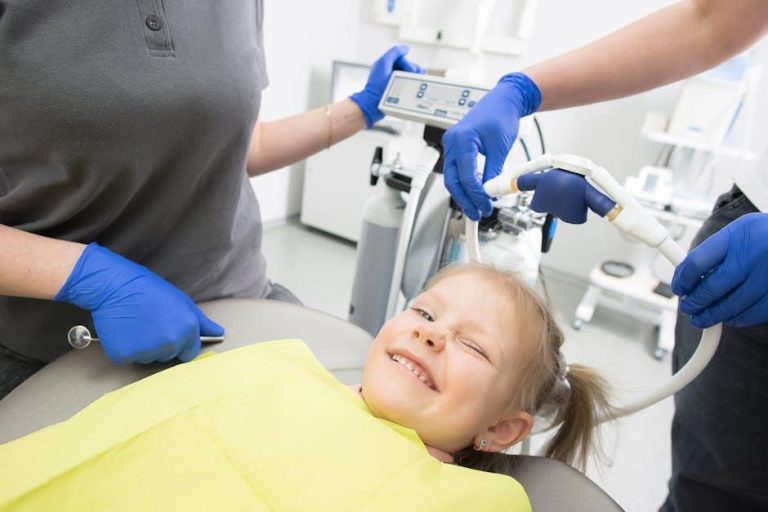Editorial: Updates in Pediatric Dentistry – Frontiers
Keeping up with advances in pediatric dentistry is essential for parents, dental professionals, and caregivers who want to offer children the best oral healthcare available. In recent years, the field has seen remarkable frontiers that promise to revolutionize early childhood dental care, improve preventive strategies, and introduce minimally invasive therapies that foster positive dental experiences. In this editorial, we explore the latest updates in pediatric dentistry and some exciting innovations shaping the future of growing smiles.
Introduction to Pediatric Dentistry Advances
Pediatric dentistry specializes in the unique oral health needs of infants, children, and adolescents, encompassing preventive care, restorative treatments, and behavioral management. As childhood dental conditions continue to evolve with changing diets, lifestyles, and technology, pediatric dentists must adapt and innovate. Frontiers in pediatric dentistry address areas such as digital imaging, sedation and anxiety management, early orthodontics, and enhanced fluoride therapies.
Key Updates in Pediatric Dentistry Frontiers
1. Digital Dentistry and 3D Imaging
Digital advancements like 3D intraoral scanners and cone-beam computed tomography (CBCT) have transformed diagnostics and treatment planning. These tools provide precise, radiation-safe imaging of children’s teeth and jaw structures, allowing for early detection of developmental issues and dental anomalies.
- Non-invasive, faster scans reduce childhood anxiety.
- Improved orthodontic assessments for early intervention.
- Enhanced accuracy in restorative dental procedures.
2. Minimally Invasive Treatments
The shift towards minimally invasive pediatric dentistry emphasizes preserving natural tooth structure and reducing discomfort. Techniques gaining popularity include:
- Silver Diamine Fluoride (SDF): A non-invasive solution to arrest early dental caries without drilling.
- Resin Infiltration: Seals early enamel lesions and prevents progression.
- Air Abrasion: Gentle removal of decay using compressed air and fine particles.
3. Sedation and Anxiety Management Innovations
Managing dental anxiety in children remains a priority. Modern sedation practices are safer and more effective, integrating pharmacological and behavioral techniques. Advances include:
- Use of nitrous oxide sedation with controlled delivery systems.
- Virtual reality distraction tools to create calming dental experiences.
- Personalized behavior guidance tailored to each child’s needs.
4. Early Orthodontic Intervention and Preventive Orthodontics
Interceptive orthodontics is a growing focus area. Early screenings help identify malocclusions and jaw growth issues to enable simpler treatments, such as:
- Palatal expanders to improve dental arch development.
- Functional appliances promoting jaw alignment during growth phases.
- Customized aligners designed for pediatric patients.
Benefits of Adopting New Pediatric Dentistry Frontiers
Implementing the latest pediatric dentistry innovations offers substantial benefits both for patients and dental practices:
- Enhanced patient comfort: Minimally invasive and digital approaches reduce fear.
- Improved treatment outcomes: Early detection and tailored care improve long-term oral health.
- Increased parental confidence: Parents appreciate cutting-edge, evidence-based care.
- Streamlined workflows: Digital tools support efficient diagnosis and documentation.
Practical Tips for Parents and Caregivers
Parents can play a proactive role in their child’s dental health by following these actionable tips:
- Schedule the first dental visit by age 1 or within six months of the first tooth eruption.
- Encourage regular brushing with fluoride toothpaste twice daily.
- Limit sugary snacks and drinks to reduce early childhood caries risk.
- Discuss with your pediatric dentist about fluoride varnish and sealant options.
- Monitor your child’s growth and report any concerns about bite alignment early.
Case Study: Impact of Silver Diamine Fluoride (SDF) in Preventing Caries
In a recent pediatric dental clinic, SDF was applied to treat children with multiple early carious lesions. Over six months, the majority of treated teeth showed caries arrest without the need for restorative treatment.
| Age Group | Number of Teeth Treated | Caries Arrest Rate |
|---|---|---|
| 2-3 years | 45 | 90% |
| 4-6 years | 60 | 88% |
| 7-9 years | 30 | 92% |
The success of SDF highlights the potential for non-invasive treatment methods to significantly reduce children’s discomfort and the need for general anesthesia.
First-hand Experience: A Pediatric Dentist’s Perspective
Dr. Emily Harris, a board-certified pediatric dentist, shares her insights:
“The integration of digital scanning and sedation advancements allows me to build trust with young patients like never before. Parents are relieved to see treatments that minimize pain and anxiety. These innovations make routine visits feel less daunting and set children up for a lifetime of positive dental experiences.”
Conclusion: Embracing the Future of Pediatric Dentistry
Pediatric dentistry continues to evolve rapidly, driven by technological progress and a deeper understanding of children’s unique oral health needs. By embracing updates such as digital imaging, minimally invasive treatments, personalized sedation protocols, and early orthodontic interventions, dental professionals can enhance care delivery and patient outcomes. Parents and caregivers benefit from being informed partners in this journey, ensuring the best preventive and restorative solutions for their children.
Stay tuned to this evolving frontier of pediatric dentistry for more breakthroughs that will keep children’s smiles healthy, bright, and confident.


